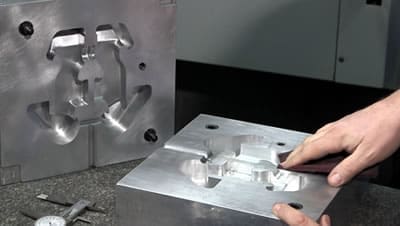Ceramic Shell Preparation For Pouring
In preparation for casting (pouring the liquid metal) into the ceramic shell, the dewaxed ceramic shell is fired to burn out the last traces of pattern material (wax residue) and to develop the high temperature bond of the ceramic shell. This procedure gives the shell its ultimate hot strength by preheating at approximately 1800 (982C) degrees F. only by performing this critical step can the the thin ceramic shell contain metal poured into it in excess of 2900 (1600C) degrees F.
The hot shells may be poured directly from a furnace or a ladle. Specialized shops may pour with assistance of vacuum, pressure and/or by centrifugal force. This enables the investment casting foundries to reproduce the most intricate details and extremely thin walls of an original wax or plastic pattern.
Melting equipment employed depends on the alloy. For nonferrous alloys, gas fired or electric crucible furnaces are common. For our operation we use high-frequency induction furnaces, commonly used for melting steel, stainless steel, nickel and other super alloys.




